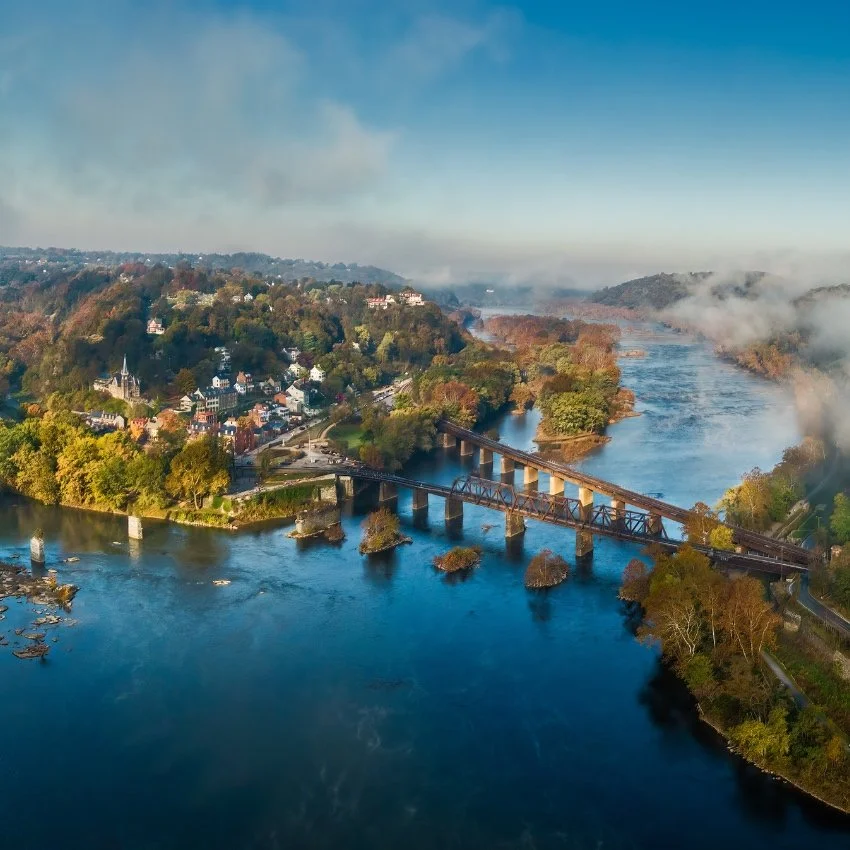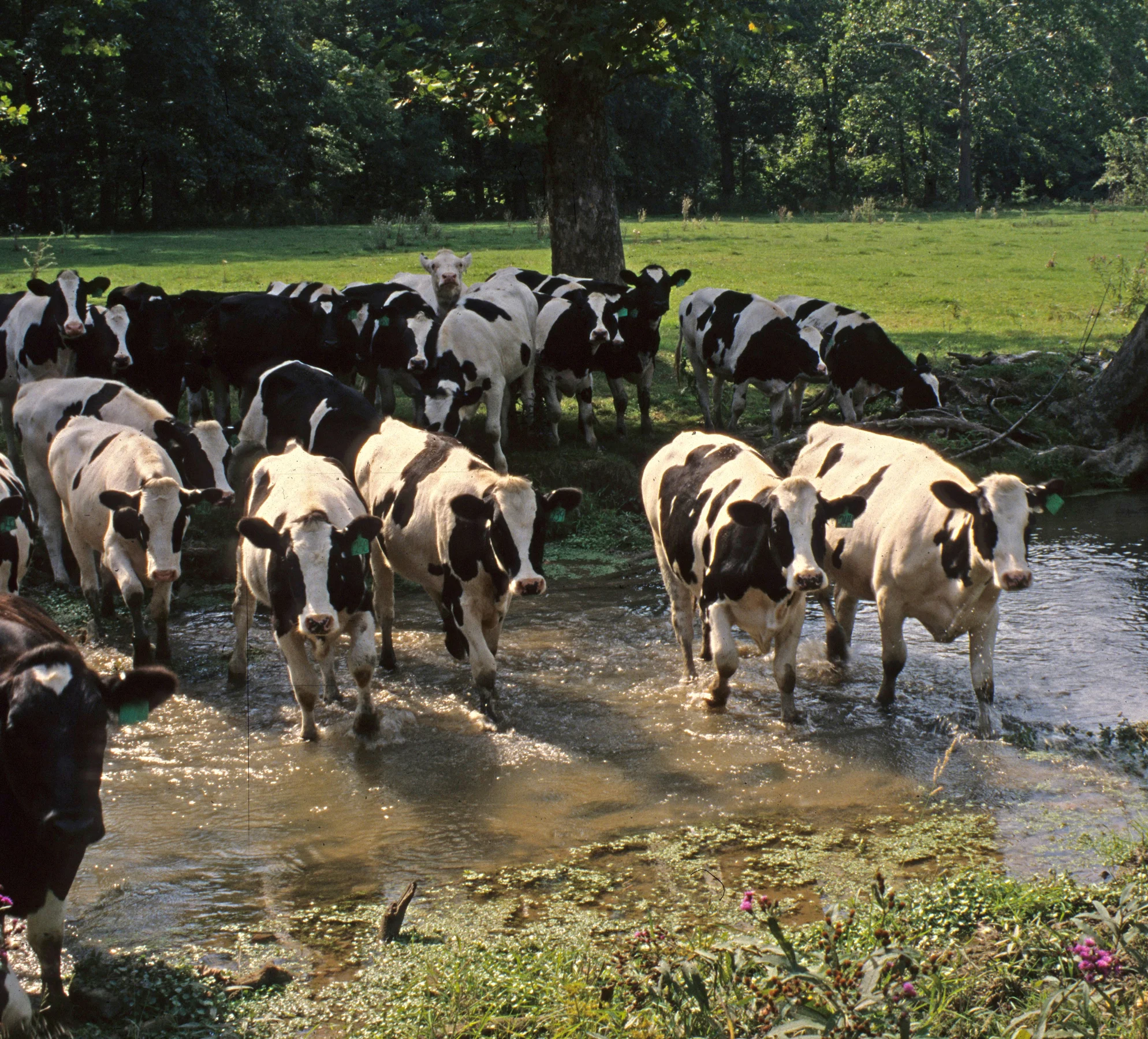Swimming called off for 2018 Nation's Escape Triathlon - Here's why
/Your FAQ guide to what happened and what can be done in the future
2017 triathletes in the potomac river courtesy of william macfarland, www.macfarlandphoto.net
You train for months. Perfect your freestyle stroke. Update your gear and register to compete in a triathlon in our nation's capital. You're all set to go and then - just like that. It's over before it started.
We imagine this was the experience for many of the 2018 Nation's Escape Triathlon athletes. Heavy rainfall in the days leading up to the event caused combined sewer overflows in the Potomac River and dangerous road conditions. DC officials and race organizers responsibly put athletes' safety first and were forced to cancel this year's race.
As a nonprofit partner of the event, Potomac Conservancy is equally disappointed by this outcome, and it makes our local mission to restore the Potomac to full health more important than ever.
We've put together this FAQ to provide helpful insights into the conditions that led to the cancellation of the swim race. And, we offer ways you can help in the fight for clean water!
FAQ
Q. What is Potomac Conservancy?
Potomac Conservancy is the region's leading clean water advocate. We're building a constituency of local residents who are willing to take action and speak up for stronger water protection laws so that our hometown river is safe and healthy for everyone to enjoy.
Q. How did Potomac Conservancy get involved with the Nation's Escape Triathlon?
Potomac Conservancy launched our partnership with the Nation's Triathlon in 2017, one of the first triathlons to partner with a water advocacy group in the county. We're thrilled to continue our partnership with the Escape Series Triathlon this year. Both organizations are deeply committed to improving water quality in the Potomac River so that it is healthy enough to swim in on race day and every day.
Q. Why was the swimming portion of the race canceled this year?
The swim portion of the race was canceled on the morning of Saturday, September 8, a call made by the District's Department of Energy & Environment; officials became concerned about public safety after Friday's heavy rainfalls caused excess runoff pollution and sewage overflows in the Potomac River. These types of conditions can increase bacteria concentrations to unsafe levels, posing a danger to athletes and others who come into contact with the river.
For more information on the race, please visit http://www.escapeseriestri.com/posts/2223/2018-nations-escape-triathlon-is-cancelled.
Q. When will the Potomac River be safe to swim in again?
On average, it takes 48-72 hours for pollution and sewage overflows to wash downstream and out of local streams and the Potomac River. We caution residents to avoid touching local streams and the Potomac for three days after strong storms and heavy rainfall events.
Before considering swimming in the Potomac River, read our recent post Ask the Expert: Is it safe to swim in the Potomac for more information about swimming safety.
Q. I've heard about a project that's addressing sewage overflows in the Anacostia River. Is something similar happening to help the Potomac River?
As part of a $2 billion Clean Rivers Project, DC Water is investing in large-scale, water infrastructure improvements to reduce pollution in the Anacostia and the Potomac rivers. This effort, mandated by the EPA, is designed to eliminate most incidents of combined sewer overflows and reduce polluted runoff.
In March of 2018, DC Water brought online a 7-mile long combined runoff retention tunnel, built underneath the Anacostia River. The tunnel stores up to 100 billion gallons of combined overflow during rain events and diverts its contents to DC Water where it can be treated. This year alone, the Anacostia tunnel has diverted over one billion gallons of diluted sewage to the waste water treatment plant. For more information, visit https://www.dcwater.com/whats-going-on/news/dc-water-delivers-cleaner-anacostia-river-opening-first-leg-massive-tunnel.
The Potomac River Tunnel is the next major phase of the DC Clean Rivers Project. To learn more about this project, visit https://www.dcwater.com/projects/potomac-river-tunnel-project.
Q. In general, is the Potomac River healthy?
Overall, the Potomac River's health is improving. In fact, the river is making a remarkable comeback!
In just ten years, the river's health has improved from a grade of D to a B, as reported in our 2018 Potomac Report Card. Pollution levels are declining, native wildlife is returning, and more people than ever are enjoying recreational activities on and along our hometown river.
Though we're encouraged by the Potomac's progress, there's more work to do.
Polluted stormwater runoff is the fastest growing source of pollution to the Potomac and Chesapeake Bay. If left unchecked, this growing threat will undo decades of progress to restore the Potomac to full health. Polluted runoff carries toxins, fertilizers, street oils, and trash over paved surfaces and into local streams and drinking water sources.
To learn more about the Potomac River's health, visit www.potomacreportcard.org.
Q. What is Potomac Conservancy doing to improve the health of the Potomac River?
Potomac Conservancy combats polluted runoff by mobilizing residents and placing public pressure on elected leaders to strengthen protections for the Potomac River, the source of drinking water for over five million people. We advocate for water infrastructure improvements, stronger water protection laws, river-friendly growth and development, and investments in tree plantings, rain gardens, and other nature-based solutions that capture and filter stormwater runoff.
We also host over twenty river cleanups a year, empowering thousands of neighbors to get their hands dirty for clean water; we've removed over 150 tons of plastics and trash from the Potomac River in the last ten years. Join our efforts today at www.potomac.org/take-action.
Q. What is causing the Potomac River to get better over time?
Thanks to the Clean Water Act of 1972, federal measures to curb major sources of water pollution have and continue to be working. The Potomac River and rivers across the country, on the whole, are experiencing declining levels of pollution from industry.
The Chesapeake Bay Cleanup plan, a voluntary federal-state commitment to reduce water pollution, has also significantly contributed to decreasing pollution levels in our region. Each state in the Potomac River's watershed (Maryland, Virginia, West Virginia, and Pennsylvania, and the District of Columbia) have committed to reducing nutrients and sediment and are required to meet pollution reduction goals by 2025. We're already benefiting from this program; the top sources of pollution in the Potomac River - nitrogen, phosphorus, and sediment - are all on the decline.
For more information on the health of the Potomac River, visit www.potomacreportcard.org.
Q. What will it take to get the Potomac River to an 'A'?
Potomac Conservancy's team works tirelessly to advance conservation and advocacy efforts that combat polluted runoff and restore clean water to the Potomac River. Our mission is simple: we're working to make the Potomac River a safe place for fishing, swimming, and recreation. A natural resource we can all enjoy year-round. We are dedicated to returning an A-worthy and healthy Potomac River to our community.
We believe strong federal leadership, improved state and county water protection laws, and local conservation and restoration efforts are key to eliminating water pollution and restoring clean water. Amidst growing uncertainty at the federal level, our local land protection, advocacy, and volunteer efforts are more important than ever.
Q. What can I do to help make the river cleaner?
Potomac Conservancy is building a local movement for clean water. Over 23,000 supporters are taking action to stand up for strong water protections and hold their elected leaders accountable to clean water commitments. Residents can get involved by signing a petition, volunteering, or becoming a member; our local conservation programs depend on community support. Each year, we host over twenty cleanup and tree planting events where people of all ages get their hands dirty for clean water. Act local and get vocal at www.potomac.org/take-action.
Get local river news delivered to your inbox.
Sign up to receive our monthly River Update email.
100% Privacy. We don't spam or share your information.















